Buyers of the Future: Exploring Baby Boomers, Millennials, Gen Z and Gen Alpha as Shoppers
If you have been following along with our “Building the Shopper Journey for Tomorrow” series, then you now understand how influential the post-pandemic retail transformation has been. This intensity has caused changing habits and expectations, however, the future belongs to those who embrace the change. Who are these buyers? How will they choose to engage? What experiences are they looking for? Let’s dive more into the customer of the future and their expected behaviors.

Where better to start than Generation Z. Gen Z is aging into the most powerful buying demographic across the globe. Born between 1998 and 2010 this demographic is a key target audience for any consumer product or service. Their purchase power is growing exponentially and is predicted to quadruple in the next two years. Just look at these stats, there are 2.6 billion people across the globe in Gen z. They hold $44 billion dollars of spending power!
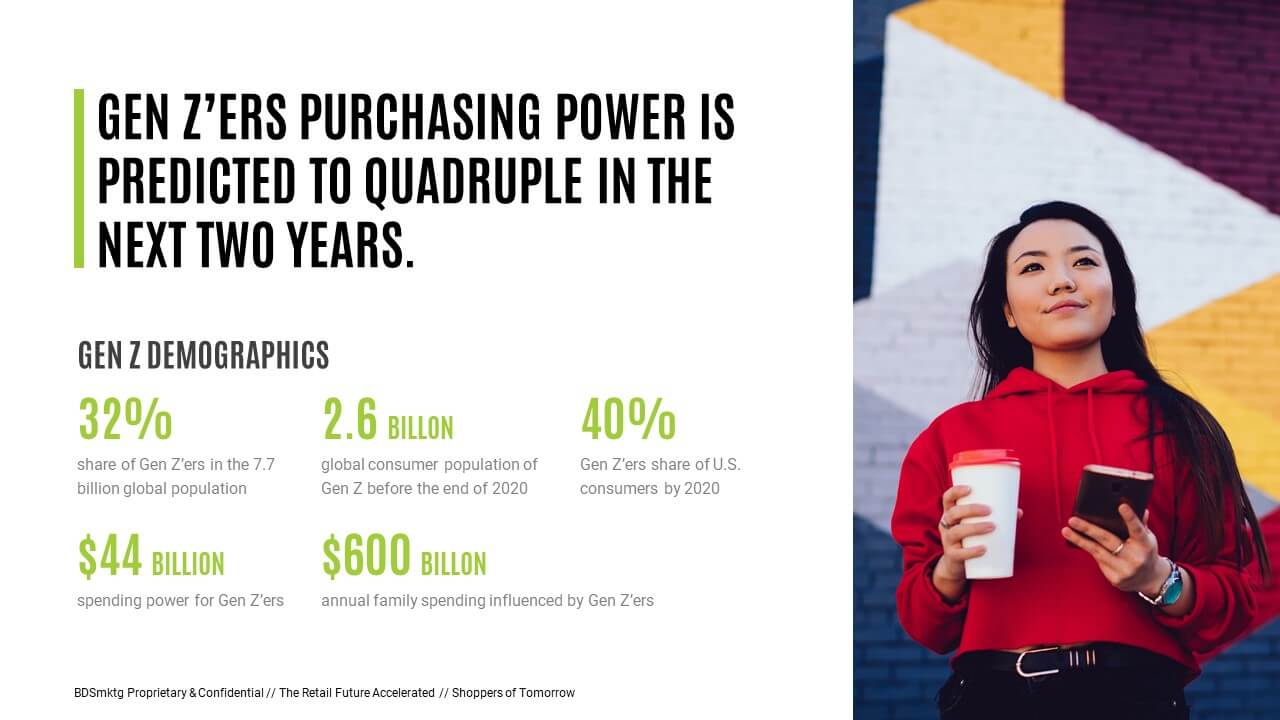
Also, Gen Z likes to shop in store. It’s not just older generations who are comfortable shopping in-store because that’s what they are used to, but young people enjoy the experience of it. They don’t want to call in an order or interact with their TV to shop, as we see here – they want to shop on their devices or in person.
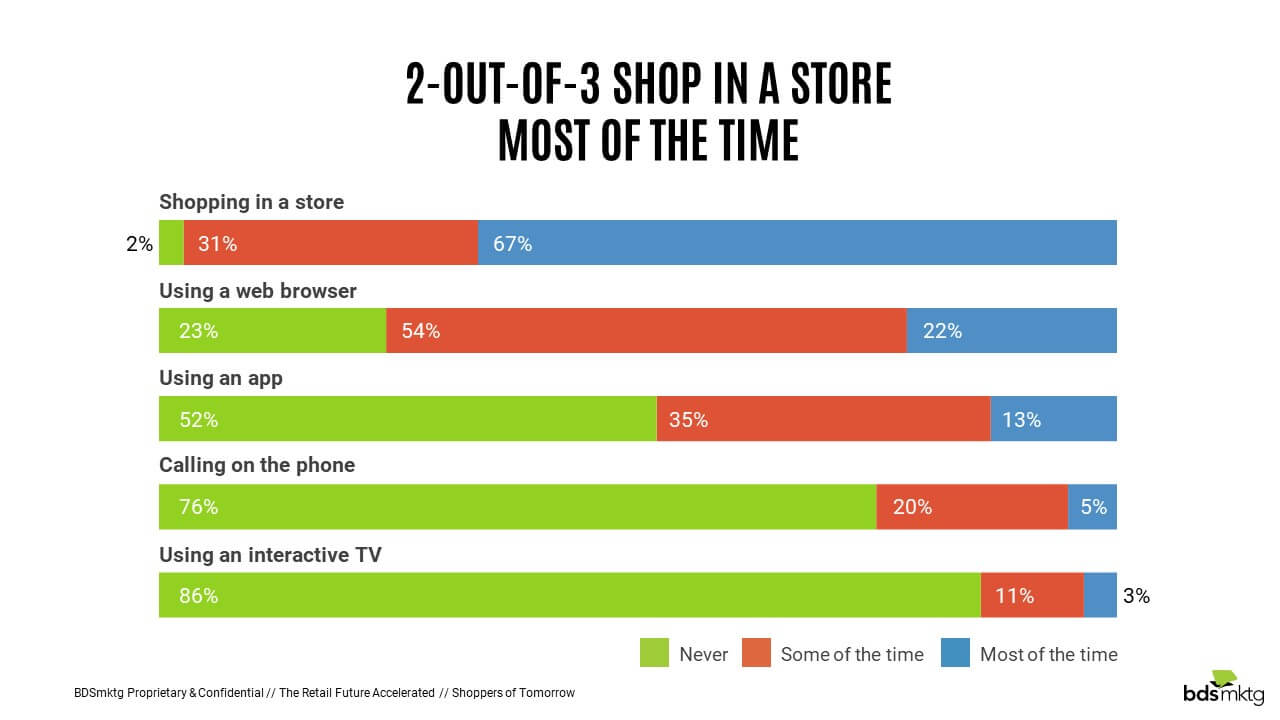
Gen Z holds the buying power for the largest retail and electronics spend to date. They are going to spend more money on cars, communication, entertainment, retail, travel and eating out than any other generation before them.
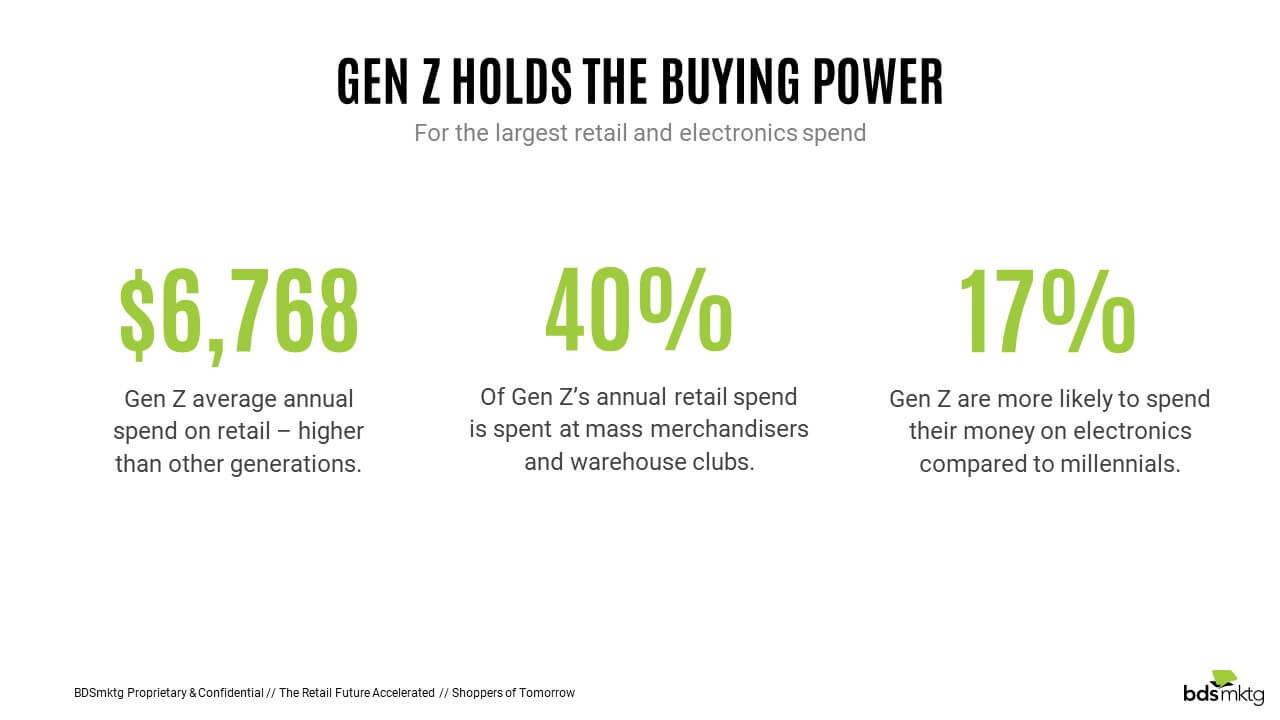
More importantly to companies that offer gaming solutions, Gen Z is hyper relevant to that target consumer. 66% of male Gen Zers say that gaming is a core component of their lifestyle. They are also willing to spend money on luxury items and products that enhance their lifestyle and give them a better experience.
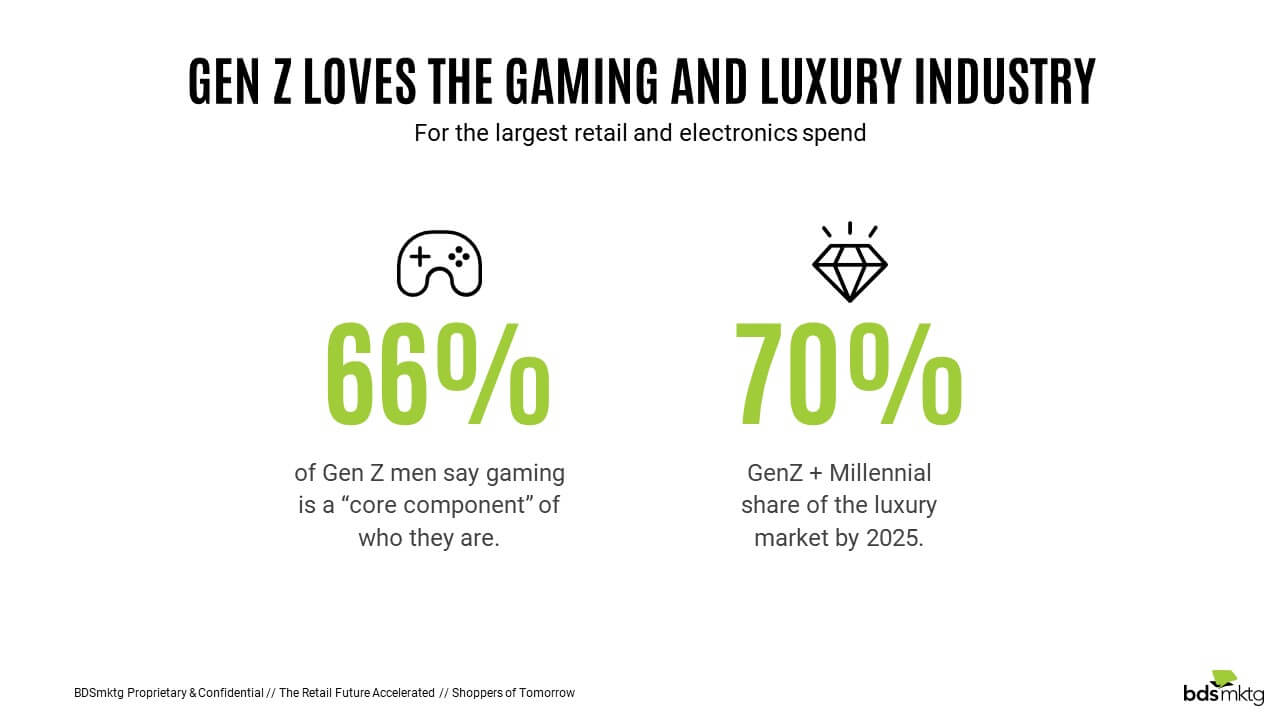
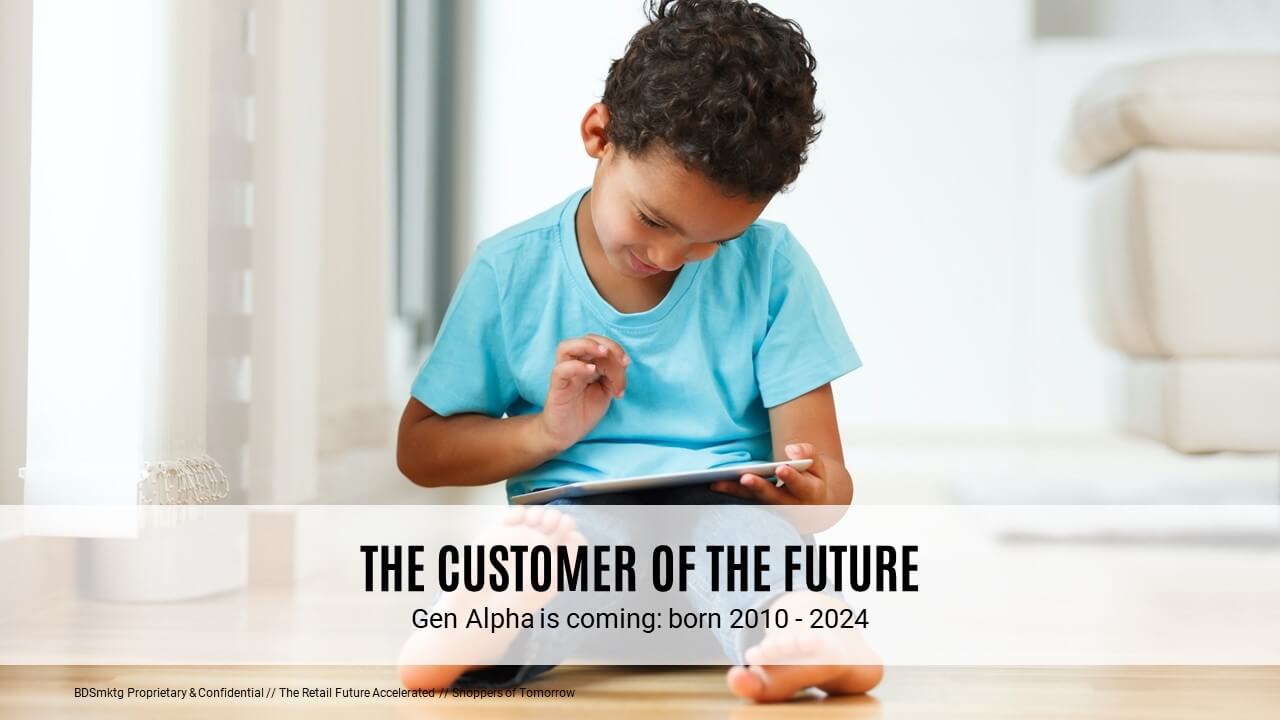
Who comes next after Generation Z? Better start preparing now for Generation Alpha. These are the children of Gen X and Millennials born between 2010 and 2024. They are today’s digitally native children from age 11 down to those babies being born over the next 3 years.

While it may sound like children from ages newborn up to age 11 are too young to have any purchasing power, how wrong we are! They play a significant role in influencing their parents’ purchase decisions. This generation is growing up with completely higher expectations of technology; touchscreen tablets, smart watches, smart speakers, voice recognition and social influence have been normal for them since the day there were born. Alphas are looking forward to having their own spending power and are already excited about making their own purchasing decisions.
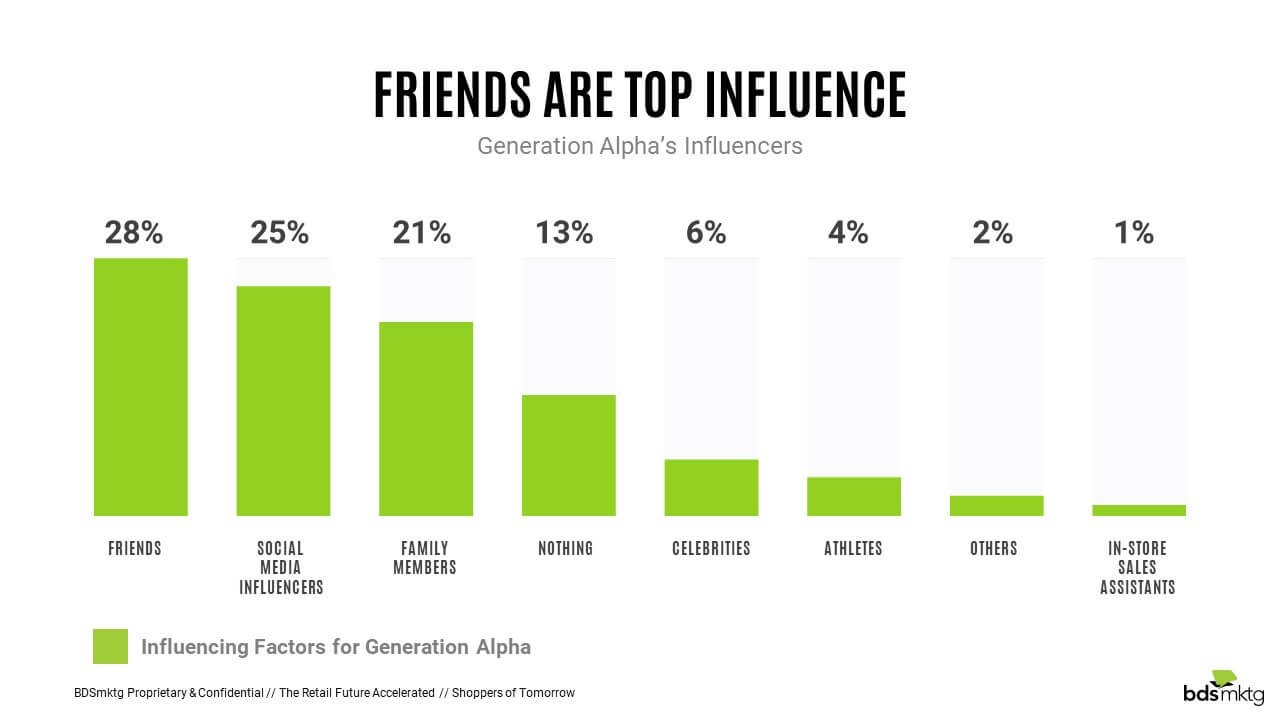
If Gen Alpha is influencing their parents, then who is influencing Gen Alpha? Well, it’s their friends, first and foremost, and social media influencers second.
- Over half of Alpha respondents want to buy something if their favorite YouTube or Instagram star is using, wearing, or consuming it.
- Influencers have relegated family members to third position when it comes to affecting their buying habits.
- 14% of Alphas would like to see influencers have their own retail outlets.
- This generation has more “friends” than ever before due to hyper connectivity.
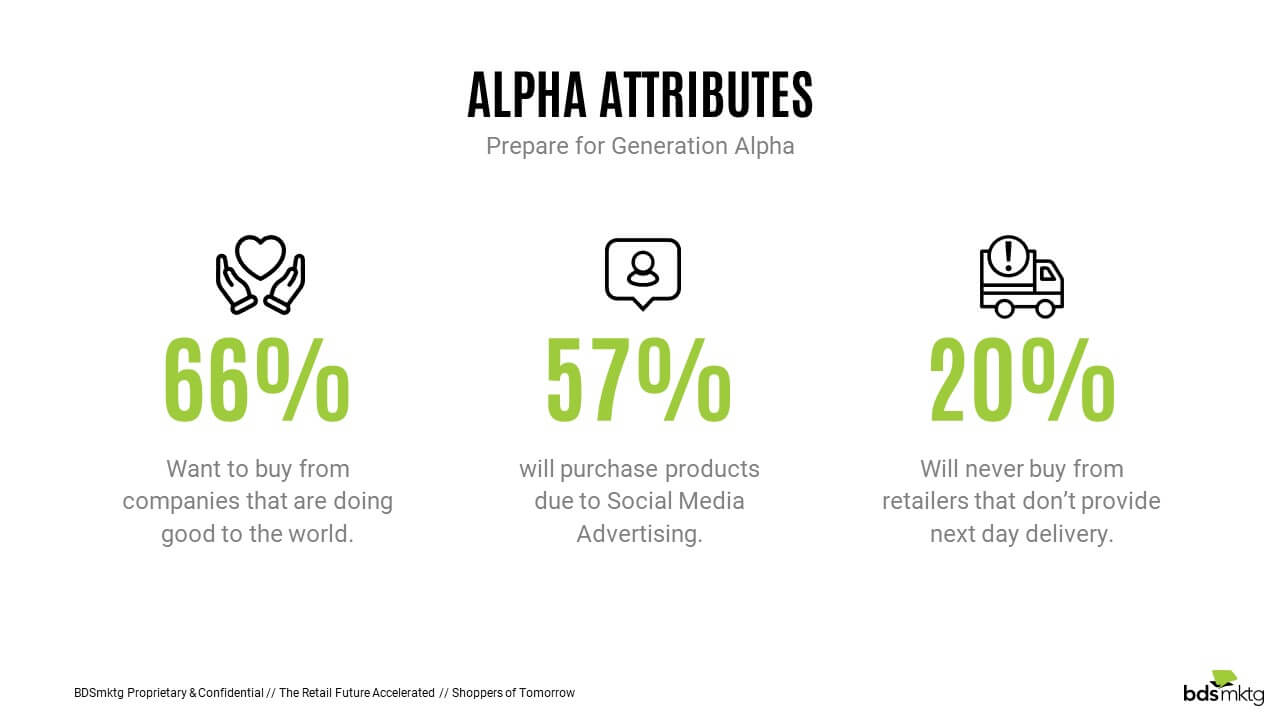
Generation Alpha is characterized by their strong values, which will dictate who they buy from. Two thirds of Alphas want to buy from companies that are trying to do good in the world. From a young age, children are aware of brands and begin to recognize and even form a relationship with the brands they see. Delivery times, as an example, shape where and with which retailers Alphas will shop; 20% will never buy from somewhere that can’t deliver the next day. Delivery is an emotional experience for Alphas: 90% feel happy when an online order arrives and 47% share photos of their order once they have received it.
The flipside of this emotional experience is that they feel frustration when obliged to wait. Their consumer expectations will be immense, so organizations must harness the positives and mitigate the frustrations in the delivery experience.

But wait! We can’t really forget about the other generational segments. After all, these generations paved the way for Gen Z and Gen Alpha and are still collectively a strong buying base. Millennials were the pioneers of social, while Gen X were many early adopters – and much of the technology of the future will be driven by both those age groups.

For Baby Boomers, the pandemic actually forced many to become more digitally savvy, closing the tech gap that used to be so wide. They’re not only searching online, but making purchases as well, and many will look to connect with their Gen Z and Gen Alpha grandchildren in new technological ways.
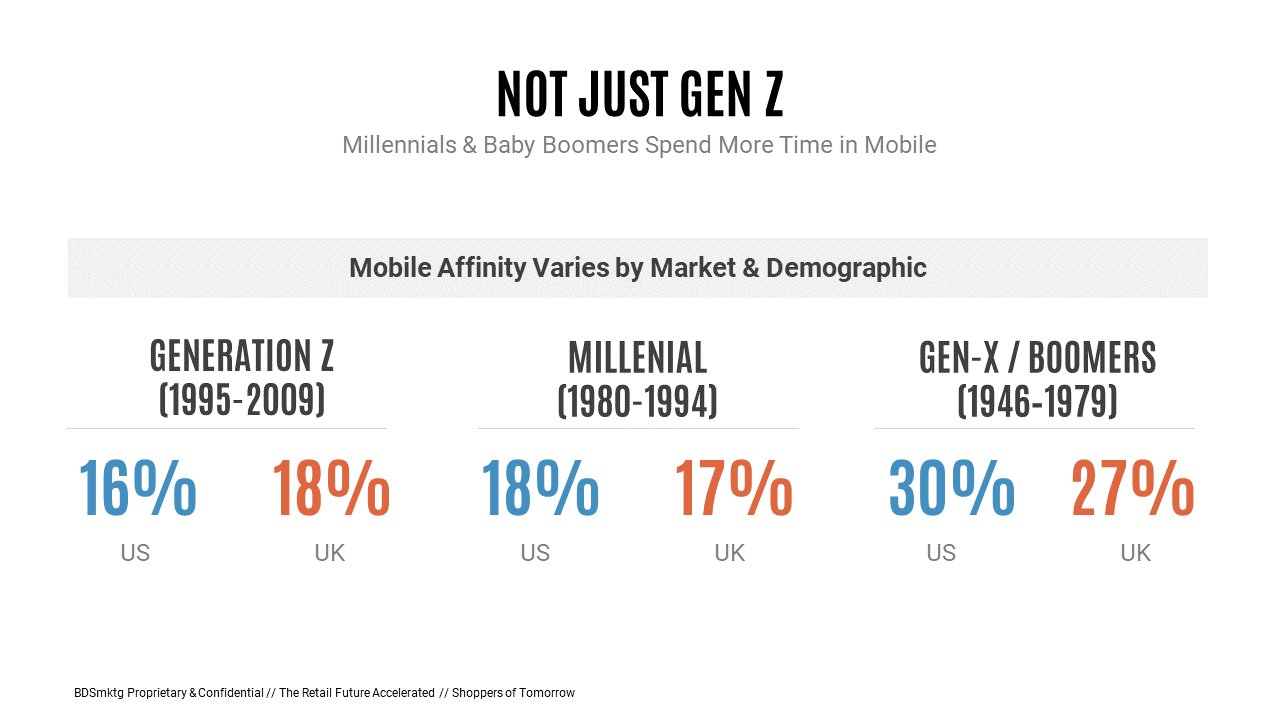
The numbers don’t lie either. In a year over year comparison, Gen X and Baby Boomers increased their mobile app usage by quite a few percentage points, proving that tech gap that had been looming for so long is finally closing.
In my next article, we’ll explore innovations for the future of shopping. Keep following me on LinkedIn for more to come around this topic! https://www.linkedin.com/in/seanludick/


